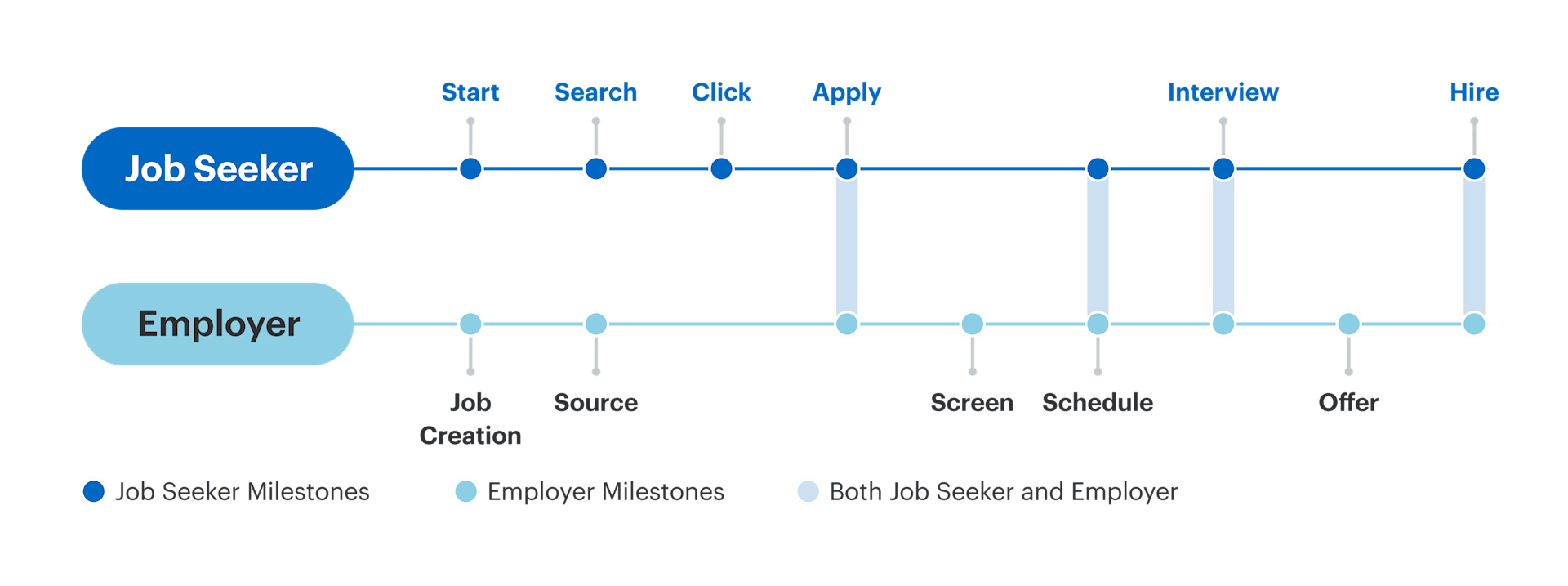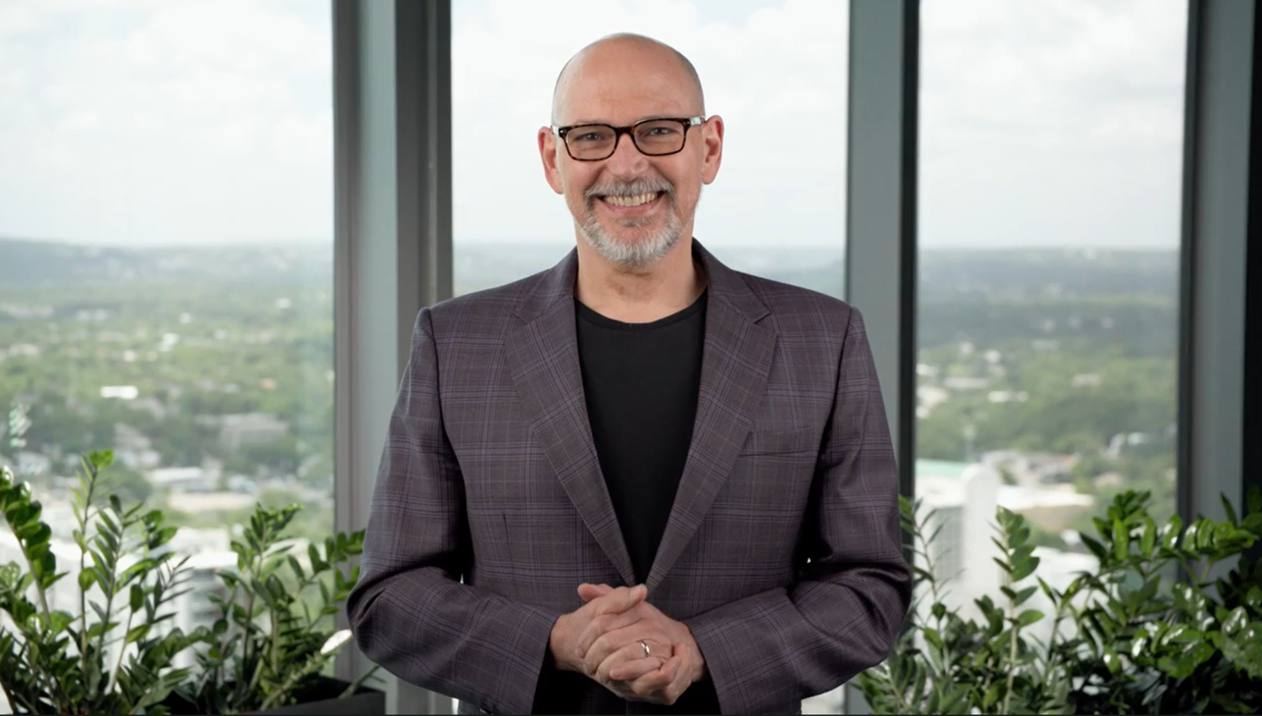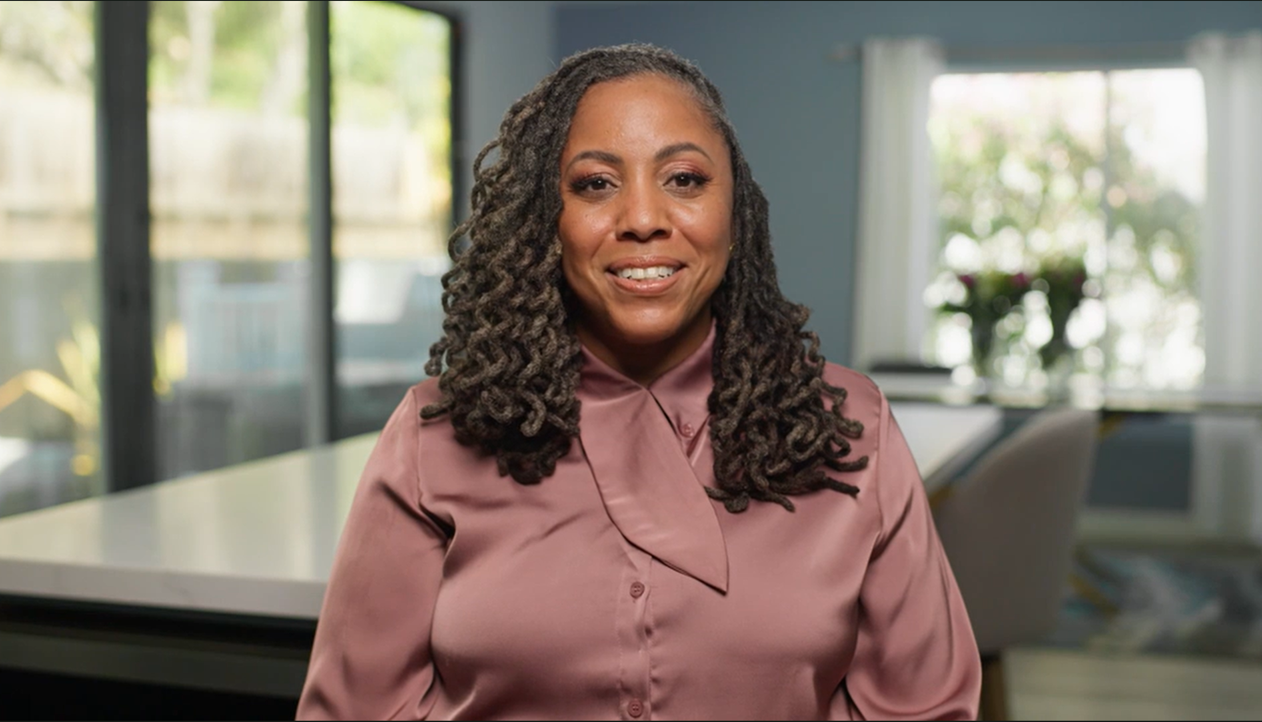Recruit Holdings Co., Ltd. held its Sustainability Update Fireside Chat on July 2, 2024. The session featured presentations by Director, Executive Vice President and COO Ayano “Sena” Senaha, who leads our sustainability initiatives as well as Chris Hyams, CEO of Indeed together with LaFawn Davis, Chief People & Sustainability Officer at Indeed who oversee Indeed’s social impact initiatives. They provided an overview and progress report on the Group’s sustainability initiatives for FY2023.
Additionally, Sena and Junichi “Jun” Arai, Senior Vice President of Corporate Strategy and Investor Relations of Recruit Holdings held a Fireside Chat to discuss the progress and challenges of the third year of our sustainability goals, “Prosper Together,” one of the company’s three strategic pillars. They also answered questions frequently asked by investors.
Sena Presents a Progress Report on the Five Sustainability Goals We Aim to Achieve by FY2023
In her candid assessment of FY2023 progress, Sena admitted that the team was making good progress on some goals, while others were proving more difficult and challenging than anticipated.
The three goals we are making excellent progress on are carbon neutrality, helping 30 million job seekers facing barriers get hired, and achieving gender parity in the boardroom
Sena began by reporting Recruit Group’s solid progress on climate action for three consecutive years since FY2021. Specifically, Recruit Group expects to achieve its short-term goal of carbon neutrality in its own business activities for the third year in a row, and continues to work with partners on the long-term goal of achieving carbon neutrality across its entire value chain. Furthermore, international nonprofit environmental organization CDP*1 recognized the Group as a climate change “A-Lister” — its highest evaluation — for the first time in 2023.
Recruit Group has also made significant strides toward its goal of helping 30 million job seekers facing barriers get hired. Over the past three years, the Group has already supported the hiring of 6.9 million job seekers facing labor market barriers — barriers include education, criminal record, disability, military experience and digital/physical access for finding a job.
From this year, we have added a new category, to remove barriers that job seekers with refugee backgrounds are facing, in response to growing global concern, especially in Europe. This addition makes the sixth barrier that we focus on, in addition to the above mentioned five common barriers around the world.
Finally, Sena noted that the percentage of women on the Board of Directors rose from 20% in FY2021 to 33% in 2024, demonstrating clear progress toward achieving gender parity among the member of the Board Directors and Audit & Supervisory Board.
*1 CDP is a non-governmental organization (NGO) established in 2000 that is controlled by a British charity. It owns one of the world's largest environmental databases, and works with over 746 investors holding over USD130 trillion in assets to disclose the environmental impact of companies.
Signs of acceleration emerge for our other two goals through trial and error
Related to our goal to reduce the time to get hired by half, Sena revealed that, while we continue to refine the measurement of “time to get hired,” starting FY2023, Recruit Group has been working on specific initiatives focusing on measuring and shortening “time to hire,” which can be calculated by our platform with accuracy.

The Hiring Process of Job Seekers and Employers
Sena then explained about the goal of achieving gender parity at all job levels across the Group. When we look at gender parity for overall employees, we have largely achieved this. And while the percentage of women in senior executive positions has risen, however, the percentage of women in managerial positions is currently on a plateau. For this, the Group is working on implementing talent development programs to expand the candidate pools.
Two new themes vital to us
In addition to the five core goals, Sena mentioned two other themes being actively discussed in response to the latest global trends. Firstly the responsible use of technology, such as artificial intelligence (AI). She shared that the Group continuously talks about the topic to ensure that its internal initiatives evolve alongside the technological advancements.
The second topic is sustainability disclosure regulations, which are progressively in-development in Europe. Sena stated that the Group is making collective efforts to gather the latest information and is preparing to respond.
In closing, Sena summed up as follows. “We’ve set very ambitious goals that won’t be easy to achieve. We will continue taking on challenges. In turn, together with our stakeholders, we will achieve true social impact and long-term growth so that we can all prosper together.”
Chris and LaFawn from Indeed Take a Deep Dive into the “Reducing the Time It Takes to Get Hired by Half” Initiative
Indeed CEO Chris Hyams and the company’s Chief People & Sustainability Officer, LaFawn Davis, who are leading the social impact initiatives, presented a detailed report on their progress on reducing the time it takes to get hired by half.

Chirs Hyams,CEO of Indeed
Chris shared that Indeed is now focused on “time to hire” — a perspective from the employer’s side — and revealed that the average time*2 is 55 days (as of December 2023). He also shared that those 55 days can be divided into three main phases:
*2 From the time a job is created on Indeed until candidates get jobs

Average Employer Time to Hire
Phase 1: Job Created to Golden Apply (applications that led to employment) 20%
Phase 2: Golden Apply to Employer Response 40%
Phase 3: Employer Response to Hire 20%

Breakdown of the Time to Hire
He then explained specific initiatives to shorten the time it takes at each phase. During the first phase, for example, Indeed is improving matching through Smart Sourcing and optimizing the timing of delivering recommendations. In the next phase, improvements on employer engagement through messaging functions and building and refinements on mobile apps for employers were implemented. And in the final phase, time to set up interviews were shortened through online interview functions on Indeed and links to applicant tracking systems.
Chris added that changing the behavior of both employers and job seekers is essential to reducing the time to hire. “We know cutting that interval is a huge challenge,” he said. “To accomplish that, we need to change job seeker and employer behavior ― both on and off Indeed. This is an extraordinarily ambitious undertaking, but the potential impact on society and our business is significant, and the effort is worthwhile.”
He concluded: “We need to continue to refine every phase of the hiring process to reduce both time to hire and job search duration.”
LaFawn then explained how Indeed is approaching technology and AI. “Indeed is using AI to make hiring simpler and faster for everyone, and will continue to work on responsible use of AI to reduce barriers in hiring,” she emphasized. “When used ethically, AI can be a powerful tool to move the needle forward as we level the playing field, establish fairness, and help break down barriers for job seekers.”
LaFawn then introduced three strategies for that:
Build a strong team that can leverage scientific rigor and analytical tools for our AI systems
Build scalable tools that “Indeedians” can use to develop and deploy AI responsibly
Build for humans, who still need to be involved in every step of the hiring process and deeply involved in internal standard-setting and education

LaFawn Davis, Chief People &Sustainability Officer of Indeed
In closing, LaFawn shared her enthusiasm for the future. “At Indeed, we believe the path toward building a better world of work starts with responsible AI. We’re on our own journey with fair hiring, and continuously evaluating and redesigning our hiring processes with a lens of inclusion. We’re adopting new best practices as we learn, and are dedicated to driving change across fair chance hiring, accessibility, skills first hiring, and economic security. Humanity is the key to building a fairer society. We want to use our technology, expertise and scale to ensure that all people have access to quality work.”
A Dialogue between Sena and Jun, Featuring Hard-Hitting Questions
During the Fireside Chat, Jun — who oversees investor relations — interviewed Sena to address information that investors seek but find difficult to inquire about, focusing on the goals of reducing the time it takes to get hired and achieving gender parity at all levels of Recruit Group.

Junichi “Jun” Arai, Senior Vice President of Corporate Strategy and Investor Relations (left) sits down with Ayano “Sena” Senaha, Director, Executive Vice President, and COO in charge of Sustainability (right) during the Fireside Chat.
Q. Sena and Chris mentioned the “time to hire” as a new indicator for the goal of shortening the time it takes to get hired by half. What is the difference and the relationship between the “time to hire” and the “time it takes to get hired”?
Sena: For our goal of reducing the time it takes to get hired by half, we initially measured the current interval through a survey directly sent to job seekers who had been hired through Indeed. Based on their responses, we set a 15-week baseline. However, this measurement method is not sustainable, given that we will continue this initiative for a decade and the scale of Indeed, which approximately 350 million users use every month.
In addition, respondents' memories are not always accurate. We therefore want to measure the beginning and end of the job search using digital signals on Indeed. We’ve worked hard on that for two years and can now estimate at a certain level, but have not reached a clear-cut solution.
On top of that, we know that finding the best measurement method is not the end of our journey. It’s only the starting line, because we have to shorten the time we measure. So now we want to focus more on reducing the time to get hired. That’s why we’ve introduced a new indicator from the employer’s point of view, which can be measured clearly. In other words, from job creation to hiring will be the main indicator for a while, and we want to concentrate on how we can improve the product and shorten the duration.
Jun: I think it’s now easier to understand how Recruit Group is striving to become the hiring platform that both employers and job seekers want to use, by incorporating the employer’s perspective, the time to hire. In addition, when looked at from a short- and medium-term corporate value perspective, I think the relationship between reducing that interval and its impact on business performance will become more visible.
Sena: From a management point of view, we always consider both the employer’s and job seeker’s perspectives. However, in the short term, we believe that from the employer’s perspective it is crucial to shorten the time to hire.
Looking at the number of job openings in the U.S., there was a sudden and dramatic increase after the pandemic. However, it has now leveled off. Historically, when the number of job openings has fallen sharply, the unemployment rate has generally increased. That is not the case now. The working population in the U.S. is aging, and it is becoming more difficult to hire the required talent.
If businesses can’t hire the people they need in a timely manner, they risk losing opportunities to grow. Therefore, I think our current goal of shortening the time to hire is becoming more attractive, especially under this kind of macroeconomic circumstance.
When we first set this goal in 2021, we had expectations that the reduction of time to hire would double the matching efficiency, and also double the opportunity for monetization. Now, in the context of the increasingly difficult hiring environment, I think it is possible to take an optimistic view that the coefficient could be double or even higher.
Jun: Then corporate value and social impact will be linked and more closely aligned.
Q. Let’s look at the rise in the percentage of women in management positions in FY2023. While the percentage among senior managers is improving, the percentage among managers remained flat. Will we be able to achieve our set goal?
Sena: We’re struggling to boost the percentage of women managers among our employees. I have not made this information public before, but the situation in Japan and overseas is quite different, so this year I thought it would be good to explain the situation in Japan and overseas separately.
At Recruit Co., Ltd., our major subsidiary in Japan, the percentage of women managers has risen over the years. We’ve done a lot of things to make that happen. The percentage of female section managers was only about 10% in 2006. However, by 2022, the percentage exceeded 30% for the first time, and by 2023, it was 34%. In April of this year, the percentage had risen to 36%.
Two measures in particular have contributed to this jump. One is the clarification of management requirements, which specifies the competencies and behavioral requirements for managers. We reported on this initiative last year, but the new key point in 2023 is that we have refined this clarification of management requirements by expanding the organization and layers of the requirements.
We also launched another relevant initiative: the “Co-AL Partner” Program. In addition to the head of the organization the employee belongs to, two other partners who have acquired skills in understanding people and development design are assigned to each employee to support career building from multiple perspectives and provide advice. The idea is to help each employee design a career that is uniquely his or her own, since the careers that employees are seeking are becoming increasingly diverse. These initiatives have resulted in a gradual expansion in the pool of managerial candidates. Slowly and surely, we are making progress in Japan.
Jun: I see. I understand that this is the case for Japan, but what about overseas?
Sena: There is a hiring freeze overseas in HR Technology SBU, which is why the percentage of women managers is stagnant. We are preparing to make an impact in the future, though.
Keep an Eye on Social Impact Goal Progress and Their Contribution to Business Growth in FY2024
At the end of the event, Jun asked about what we can expect in FY2024.
Sena: What we want to focus on is reducing the time it takes to get hired by half, directly connected with our business. I believe that achieving solid results in this area is vital to our medium- to long-term performance and the company's financials. I’d like to accelerate initiatives in this area.
As for the environment and gender parity goals, FY2024 is the last year of our three-year goal period. I hope to deliver a good update next year. While continuing to make solid progress, we must also set goals for the next three years. I hope 2024 will be a year that sets up our next major strides ahead.
Sena's powerful words concluded Sustainability Update Fireside Chat 2024. Please check the full video to learn more.